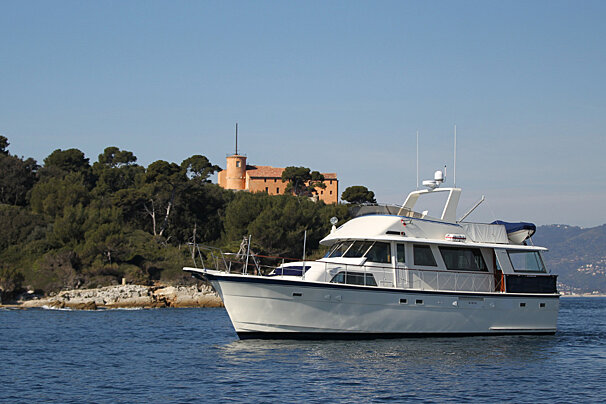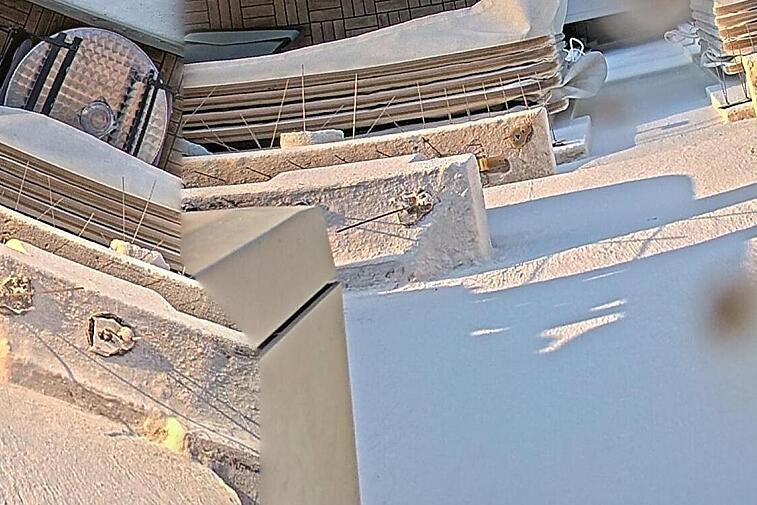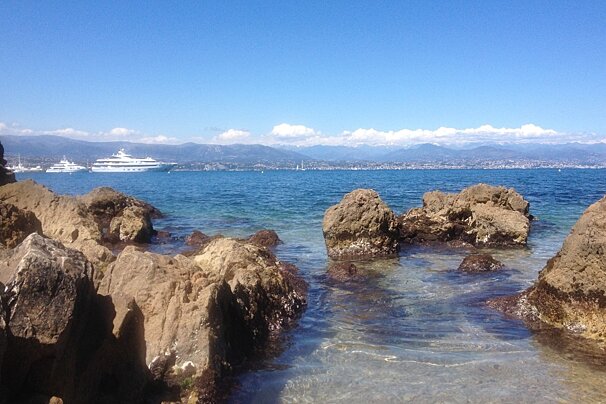
Graham Greene
Author, MI6 spy, bipolar sufferer, exile, lover of women
Graham Greene, one of the greatest voices of literature of the 20th century, lived in a humble one-bedroom apartment in Antibes for 24 years.
The writer of many critically acclaimed novels including The End of the Affair, The Power and the Glory and The Quiet American had arrived in Antibes in 1965, after the British government apparently gave warning that he had until the end of the year to leave the country to avoid being jailed for tax fraud. If Greene had not been engaged in spying for MI6 it is unlikely that the authorities would have been so lax, and this great literary light may have instead been writing from behind bars.
Rather than a jail cell, Graham Greene chose the narrow cobbled streets and Mediterranean light of Antibes, where he was a common sight each day as he lunched at Café Felix by the archway to the port. Café Felix, made famous by his patronage, has since lost any noticeable charm, but in those days he sat with Yvonne Cloette, a lady ‘friend’ and her dog, Sandy, and drank his customary dry martini without lemon and a bottle of the local Château des Garcinières. (Apparently his fondness for the place was partly due to the waiters keeping whatever was left in the bottle for his return the next day.)
His estranged wife Vivien, living back in England, was long accustomed to his affairs, for Graham had a famous weakness for women. As well as many affairs, he documented no less than 42 encounters with prostitutes. His wife said years later, ‘With hindsight, he was a person who should never have married’, and certainly his more serious writing delved deeply into morality and the struggles of fidelity and the human condition. He wrote to Vivien once that he was ‘a character profoundly antagonistic to ordinary domestic life’, which does pose certain problems for married bliss.
His writing danced across genres, between serious literature with Catholic tones and espionage thrillers, what he called ‘entertainments’. He was famous for saying ‘every writer should have a chip of ice in his heart’, although he certainly didn’t display this callousness when, in anger at treatment of a female friend in court, he accused the Nicoise authorities of colluding with the local mafia, in a pamphlet called ‘J’accuse-the dark side of Nice.’ An interview with him held in his Antibes apartment at the time of the drama has him overheard on the telephone saying, ‘They'd like to shoot me, I know… They'd like to kill me but I'm too well-known.’ The likely truth of Greene’s accusation was confirmed many years later when the mayor of Nice was jailed for corruption.
He adored Antibes, particularly in the winter months when, as he wrote in May We Borrow Your Husband,
"Gusts of rain blew along the ramparts, and the emaciated statues of the Château Grimaldi dripped with wet, and there was a sound absent in the flat blue days of summer, the continual rustle beneath the ramparts of the small surf. All along the Cote the summer restaurants were closed, but lights shone in Flix au Port, and one Peugot of the latest model stood in the parking-rank. The bare masts of the abandoned yachts stuck up like toothpicks and the last plane in the winter service dropped, in a flicker of green, red and yellow lights, like Christmas tree baubles, towards the airport in Nice. This was the Antibes I always enjoyed, and I was disappointed to find I was not alone in the restaurant as I was most nights in the week.”
Grahame Greene lived in a small apartment, Les Residences des Fleurs, on the Rue Pasteur overlooking the port, and one of his few gripes with Antibes was the noise that came from The Yacht Bar directly below his apartment- a complaint that many Antibes residents before and since can identify with!
You can find a small plaque on the apartment block, which seems somehow understated, for a man who was a true literary great. He left Antibes for Switzerland in his last few years of life, where he died of leukaemia at the age of 82.


























